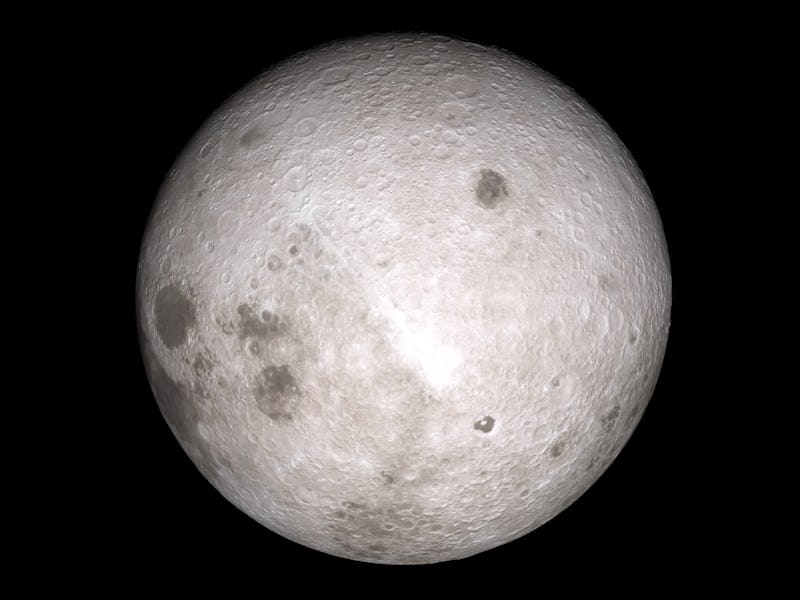First direct study of far side of the Moon reveals a "different world"
Chang'e4: The lunar lander that changed everything in 2020.

Of all China's lunar launches thus far, the Moon lander Chang'e4 perhaps deserves the accolade of the most illuminating mission.
Launched in December 2018, Chang'e4 was China's fourth Moon mission and the first destined for the far side of the Moon — the side facing away from Earth. It landed in January 2019, and made the first direct measurements of the dark side of the Moon ever. This year, the data were released to the world, gifting the scientific community with a treasure trove unlike any they had ever seen. Amongst the gems: clues to the impact history of our natural satellite and the early Solar System.
INVERSE IS COUNTING DOWN THE 20 MOST UNIVERSE-ALTERING MOMENTS OF 2020. THIS IS NUMBER 16. SEE THE FULL LIST HERE.
China’s Chang’e 4 landed on January 3, 2019. It was a landmark moment for space exploration. The reason why it is so difficult to send anything — robot or man — to the far side of the Moon is because it is difficult to maintain communications with ground control on Earth with a giant rock (the Moon!) in the way.
The data collected by the Chinese lander provided scientists with an unprecedented view of the Moon’s far side, confirming for the first time lunar regolith exists on both sides of the Moon.
Chang'e4's observations were published in the journal Science Advances in February 2020.
This diagram shows the different layers of lunar regolith on the far side of the Moon.
By probing deep into the Moon's rugged terrain, the lander revealed the first high-resolution imaging of the Moon's subsurface, allowing scientists to analyze its composition layer by layer. According to the new data, the far side of the Moon is covered by a layer of loose deposits known as lunar regolith that run up to 12 meters thick.
The data also allowed scientists to reconstruct the history of impact craters on the far side of the Moon for the first time.
After the initial layer of regolite, the researchers discovered blocks of harder material mixed with finer material. These are identified as ejecta deposits. Ejecta deposits surround a lunar crater, and are believed to be the material ejected from the impact that created the crater.
Understanding how these deposits form helps scientists gather the history of impacts on the Moon that occurred during the early formation years of the Solar System.
The far side of the Moon may also serve as the prime destination for future lunar missions as scientists suspect the area contains water ice, which could be used as a resource for astronauts on the Moon.
NVERSE IS COUNTING DOWN THE 20 MOST UNIVERSE-ALTERING MOMENTS OF 2020. THIS IS NUMBER 16. READ THE ORIGINAL STORY HERE.
This article was originally published on